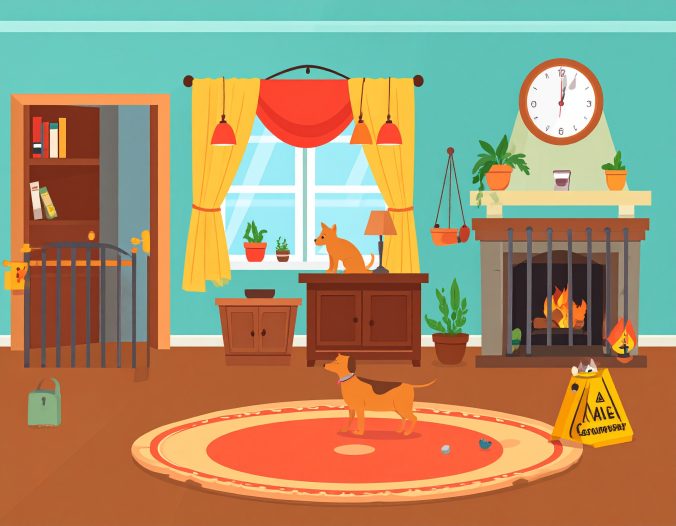Bringing a new pet home is exciting — but it also means making your home safe for curious paws, claws, and beaks. From chewing hazards to toxic plants, many everyday items can pose a risk.
Here’s how to pet-proof your home and create a secure, stress-free environment for your furry, feathered, or scaly companions.
1. Secure Electrical Cables
Why it matters: Pets (especially puppies, kittens, and rabbits) love to chew — and exposed wires can be dangerous.
What to do:
- Use cord protectors or cover cables with PVC tubing.
- Block access to wires with furniture or cable tidies.
2. Remove or Secure Toxic Plants
Many common houseplants are toxic to pets.
Common culprits: Lilies (deadly to cats), aloe vera, philodendrons, and poinsettias.
What to do:
- Replace toxic plants with pet-safe alternatives (like spider plants or cat grass).
- Move unsafe plants out of reach.
3. Keep Food & Chemicals Out of Reach
Dangerous foods: Chocolate, grapes, onions, xylitol (in sugar-free gum).
Other hazards: Cleaning products, antifreeze, and medications.
What to do:
- Store food and chemicals in sealed cupboards or high shelves.
- Use childproof latches for particularly curious pets.
4. Make Trash Inaccessible
Bins can be treasure troves for pets — but also dangerous.
What to do:
- Use lidded bins or keep them behind closed doors.
- Empty bins regularly, especially food waste.
5. Secure Windows, Doors & Balconies
- Fit screens or guards on windows.
- Check that doors and gates close securely.
- Never leave pets unsupervised on balconies.
6. Watch Out for Small Objects
Hair ties, coins, batteries, and children’s toys are all swallowing hazards.
What to do:
- Regularly check the floor for small objects.
- Store small items in drawers or containers.
7. Create a Safe Space for Your Pet
Give your pet a designated area to relax and retreat when they need downtime.
- A crate or playpen for dogs.
- A quiet room or cat tree for cats.
- A secure enclosure for small pets.
Pet-Proofing by Species
- Dogs: Block off kitchens, use stair gates, and provide plenty of chew toys.
- Cats: Anchor tall furniture, remove dangling cords, and add scratching posts.
- Small Animals: Cover cables, ensure enclosures are escape-proof, and provide supervised play areas.
- Birds: Keep ceiling fans off, close windows and doors, and remove toxic houseplants.
A Safe Home Is a Happy Home
Pet-proofing takes a little time, but it’s worth it for your peace of mind — and your pet’s safety. Once your home is secure, you can focus on what really matters: enjoying life with your new companion.
Want more? Check out our guides on toxic household plants, safe DIY pet toys, and creating pet-friendly living spaces.


Leave a Reply